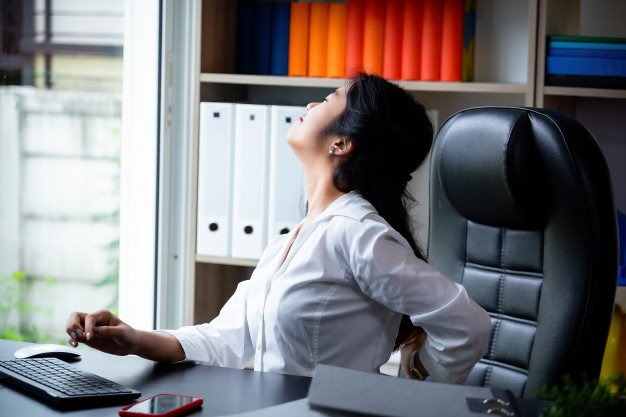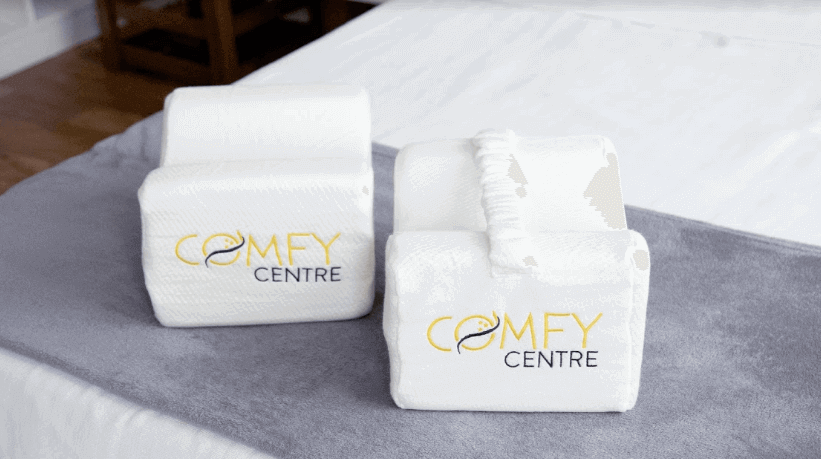Menu
Back pain is quite common, particularly lower back pain. It is responsible for the 2.6 million visits of patients to the emergency room yearly, which is the leading cause of disability globally.
Despite the numerous studies done in recent years about treating lower back pain, several patients are still undergoing unnecessary treatments such as surgeries and prescribed painkillers. Although it has been effective, those individuals can no longer continue to work and stay active as they were told to take time off to rest associated with those treatments.
Fortunately, several non-surgical back pain relief treatments are available and accessible, as it's inexpensive and can easily be done at home without a doctor's prescription.
In this article, we'll show you the common types of lower back pain and a few alternative treatments for lower back pain.

Lower back pain can be derived from your daily movements, such as working out, moving a heavy object, or other unknown causes - which can be irritating. But once the cause is identified, mild or extreme lower back pain can easily be prevented and treated.
According to Dr. Michael Ashburn of Penn Medicine, there are three common types of lower back pain:
"Three out of four people with muscle spasms can recall a specific time and activity after which the pain began," says Dr. Ashburn.
Muscle spasms are one of the common indications of lower back pain. They occur when there's an involuntary contract in the back muscles. Muscle spasms are caused by excessive bending, heavy lifting, or other movements, which usually starts with a particular incident, rather than chronic use.
Muscle strain is by far the most frequent cause of back pain, as per Dr. Ashburn. One common symptom it exhibits is a non-specific, severe muscular pain on one or both sides of the lower back. Non-specific muscular pain has similar causes with muscle spasms, such as lifting, stretching, twisting, or any other movement that provides stress to the lower back.
Radicular pain is another prevalent type of lower back pain which is possibly caused by two factors:
The characteristics of radicular pain have a slight difference from non-specific muscular pain and muscle spasms. It is characterized by a sharp shooting pain that originates in the back and streams into one or both legs, accompanied by numbness or tingling in the legs. Dr. Ashburn also added that some radicular pain could also be categorized as sciatic nerve pain - pain caused by affecting the large nerve (known as sciatic nerve) that runs from the lower back down to each leg's end.
When you visit a pain specialist, one of the most likely recommendations is to adopt a healthier lifestyle. Although this is not what you'd like to hear but promoting your overall fitness can dramatically improve your pain problems without undergoing the risk through surgery or pain medications.
Here are six non-surgical back pain relief treatments you should consider doing now:

Being cautious about the foods you consume can prevent and reverse many health conditions, including some types of lower back pain.
Inflammation acts as the body's natural response to protect itself from harm. Incorporating inflammatory foods to your diet is just as effective at treating lower back pain as non-inflammatory drugs like ibuprofen and aspirin.
Anti-inflammatory foods include:

Getting enough calcium (along with Vitamin D) is vital for healthy teeth and bones. It can also alleviate mild to extreme lower back pain caused by conditions that affect bone mass and strength.
Most adults must take between 1,000-1,200 mg per day of calcium and 600-800 vitamin D units per day. Most patients shouldn't take 2,000 mg of calcium a day as excessive calcium can cause heart problems and increase bone fractures.
Foods rich in calcium include:
You can talk to your doctor for calcium supplements prescription if you find it difficult to incorporate enough calcium in your diet.

Seventy percent of Americans are overweight, and approximately 40 percent are considered obese. Excess weight can seriously strain your back muscles and spine.
Losing weight can be challenging; however, doing so can improve lower back pain and prevent it from worsening. Apart from that, you can achieve an efficient non-surgical back pain relief and eliminate the need for any surgery or medications.

High-heeled sandals, stilettos, and pumps add glamour and style into our outfits, but it can harm the lower back and spine, leading to muscle overuse and lower back pain. Platform or block heels are also no exception as it affects the back's health over time.
We all know it's hard to let go or get rid of using these types of shoes but try to avoid them for an extended period. Opt for lower heels and avoid those pointy toed-shoes that squishes the feet into an uncomfortable position. You can use gel or padded inserts as well to lessen the impact on your hips and spine.

Personalized strength training exercises are given to patients to prevent and manage lower back pain virtually, which are focused on the core (abdominal and back muscles). These training exercises include:

A low-quality pillow can create or intensify lower back pain; that's why having a supportive pillow like knee pillow helps relieve any discomfort on the lower back while lying down.
Using a wedge or hour-glass shaped pillow is recommended to keep your legs elevated while maintaining your spine aligned in the exact position. It also provides adequate support and comfort for your lower back. These pillows are perfect not just for people experiencing back pain, but also for side sleepers, pregnant women, and people with restless leg syndrome (RLS). You can also opt for a knee pillow with straps to keep your legs in place while at sleep.
Surgery does not correct all back-pain types and is reserved only for severe conditions or in case natural treatments don't work - although it can help with the pain caused by distinct physical issues in the spine. For most patients, lifestyle changes and alternative treatments such as these non-surgical back pain relief treatments mentioned above can help prevent any specific types of lower back pain over time.